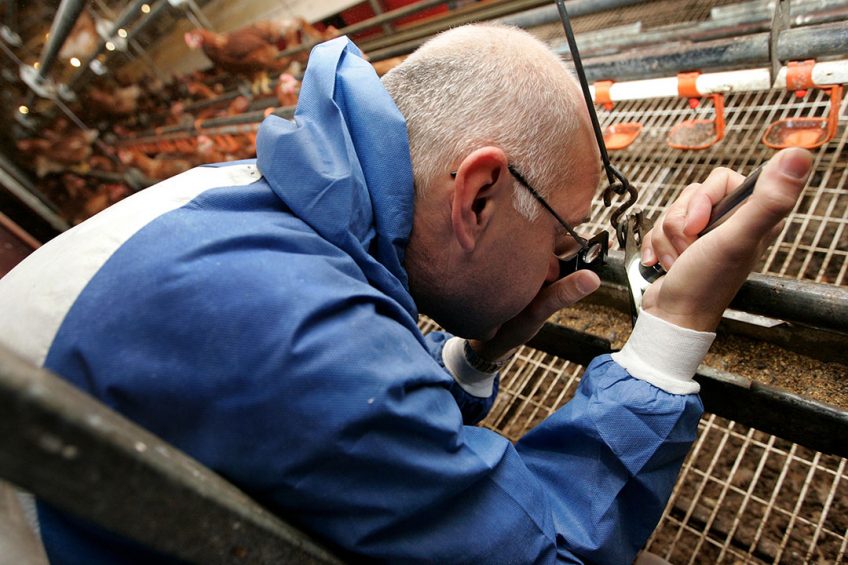Wearable sensor technology to detect poultry mites

Wearable senior technology has shown that Northern fowl mites significantly increase hen preening behaviour leading to increased skin lesions of infested birds.
The findings, published in the journal Scientific Reports, could let farmers know when it’s time to examine their birds for parasites and the tools developed could also be used to examine the effects of any changes in a bird’s environment or diet.
Entomological research led by academics from University of California Riverside wanted to see if wearable technology, known as “Fitbits for Chickens” could help improve the welfare of free-range birds against the northern fowl mite. The mite spends its entire life cycle on the bird and is only able to spend up to 10 days off host. Eggs are normally laid in the cooler regions of the bird such as the vent area of on feather shafts before migrating to the neck. Heavily infested birds can suffer up to 6% blood loss per day.
 Finding a vaccine for red mite
Finding a vaccine for red mite
Red mite is a pervasive pest in both the laying hen and broiler breeder sectors. It can cause significant production problems, act as a vector for disease and even increase mortality.
Economic impact of mite infestations
Lead author Amy Murillo said in addition to the economic consequences of infected hens laying fewer eggs, mites can make the birds sick and cause lesions: “Fowl mites are very unpleasant for the birds being fed upon and cause an itchy immune response.” To devise their detection system, Murillo’s team first identified 3 key chicken habits closely linked to their well-being:
- Pecking
- Preening
- Dustbathing
The team hypothesized they would see a big increase in preening and dustbathing among infected chickens because these activities keep feathers clean. They then placed motion sensors into tiny backpacks the chickens could wear without discomfort.
Check out the interactive Poultry Health Tool
With the latest insights on the 40+ most common poultry diseases.
Activity sensors
The activity sensors (3-axis accelerometers) affixed to individual birds continually record hen movements before, during and after infestation with mites. Alireza Abdoli, a doctoral student in computer science at the university, then developed a system whereby movements recorded by sensors were identified to specific bird behaviours through a previously trained algorithm, with frequency of the behaviours recorded for the individual birds. “Most algorithms use either shape or features, but not both. Our approach is exciting because it increases the accuracy of the data so much and is key to make good decisions about the chickens’ health,” he said. The flock in the study, 48 beak trimmed Hy-Line Brown laying hens, did suffer from a mite infestation, which the ream related to an increase in cleaning behaviours. Once the birds were treated and healed, the data showed preening and dust baths went back to normal levels.









